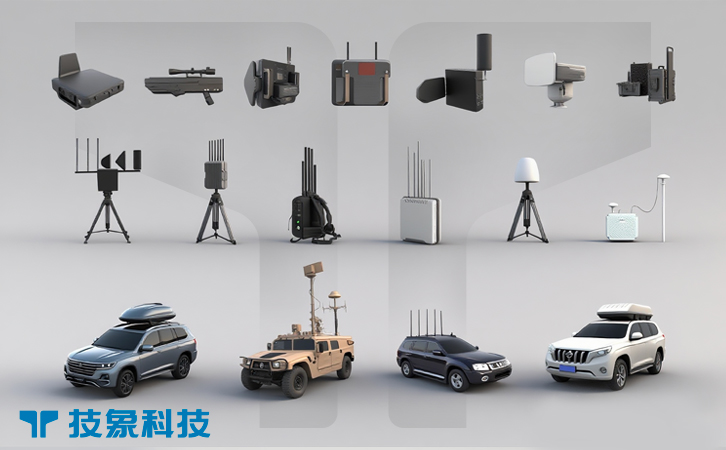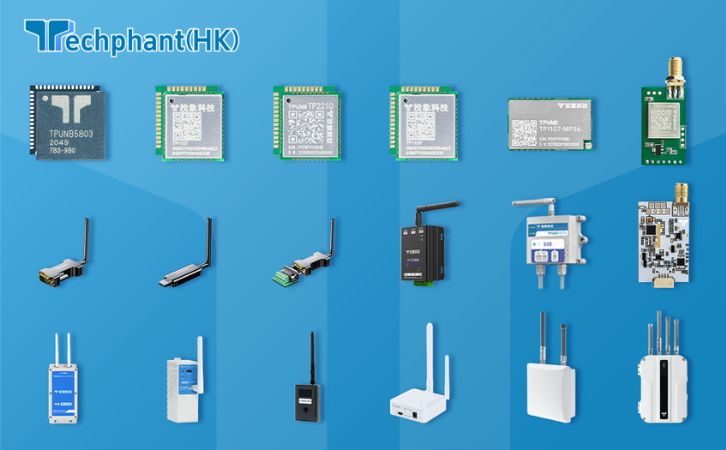The drone proliferation in 2025, with over 6 million unmanned aerial vehicles (UAVs) in global use, has made mobile assets like convoys, VIP transports, and field operations vulnerable to rogue drone threats that strike on the move. Vehicle-mounted counter-drone systems, integrating sensors, jammers, and lasers onto trucks or armored vehicles, provide dynamic, on-the-go defense, enabling detection and neutralization while traveling. These platforms offer robust coverage for scenarios where portable tools lack power or fixed systems can’t relocate, ideal for border patrols, military convoys, or event security motorcades. Unlike handheld or stationary setups, vehicle-mounted systems combine mobility with heavy-duty capabilities, ensuring protection in transit. This article explores the mobile drone threat, the mechanics of vehicle-mounted systems, their real-world applications, and the challenges and future potential of this road-ready counter-UAV technology.
I. The Mobile Drone Threat and Need for Vehicle-Mounted Systems
Rogue drones pose threats to moving targets, with incidents like attacks on U.S. convoys in 2024 rising 35% globally, leading to casualties and operational halts. In military contexts like Ukraine, drones tail convoys for ambushes, while civilian risks include pursuits of VIP vehicles or patrols, exploiting mobility to strike unpredictably and evade static defenses.
Portable tools lack the power for sustained operations, while fixed systems can’t protect moving assets. Vehicle-mounted counter-drone systems solve this by providing mobile, powerful defense, as seen in 2025 NATO exercises where mounted jammers neutralized threats during advances. The DEFENSE Act, enacted in September 2025, supports vehicle-integrated tech for civilian fleets, emphasizing their role in countering the pursuit-capable nature of drone threats through on-the-move, robust protection.
II. Mechanics of Vehicle-Mounted Counter-Drone Systems
Vehicle-mounted systems integrate sensors and effectors onto platforms like trucks, with radar for detection up to 5 km, RF analyzers for signal jamming, and lasers or nets for neutralization. Systems like the U.S. Marine Corps’ L-MADIS or DroneShield’s vehicle kits use stabilized mounts to maintain accuracy at speeds up to 60 mph, with AI fusing data for threat tracking.
The mechanics involve power from vehicle generators, continuous scanning, and AI-driven responses—radar spots drones, RF disrupts links, and lasers engage precisely. For example, a mounted laser can disable a drone in seconds while moving. Advantages include high power for long ranges, mobility for convoys, and integration with vehicle comms. Limitations include vehicle dependency, weight adding to fuel costs, and vibration affecting sensor precision. In 2025, advancements in shock-absorbent mounts and compact AI have improved performance, making these systems a key component of mobile C-UAS strategies.
III. Applications and Real-World Deployments
Vehicle-mounted systems are deployed for mobile defense in civilian and military settings. In civilian applications, border patrols like U.S. CBP use mounted radars and jammers to counter smuggling drones during vehicle pursuits, neutralizing threats on the go in 2025 operations. Event security motorcades employ kits to protect VIPs, scanning airspaces during transit and disrupting overhead UAVs. Law enforcement convoys integrate systems to counter drone harassment during high-profile transports.
In military applications, mounted systems safeguard convoys and patrols. The U.S. Army’s 2025 Middle East deployments featured L-MADIS vehicles neutralizing drone swarms during advances, enhancing troop mobility. European forces used similar setups in urban exercises, countering reconnaissance UAVs. The Counter UAS Technology USA Conference in December 2025 showcased these, emphasizing hybrid sensor-effector mounts for layered defense. Success relies on vehicle integration and operator training, but their mobility makes them indispensable for on-the-move threats.
IV. Challenges and Future Prospects
Vehicle-mounted systems face mobility, cost, and integration challenges. Added weight reduces vehicle speed and fuel efficiency, while high costs ($500,000+ per equipped vehicle) limit fleets. Vibration and dust in rough terrains can degrade sensors, requiring rugged designs.
Regulatory hurdles include FCC restrictions on jammers during movement, though the September 2025 DEFENSE Act eases for security operations. Ethical concerns involve potential misuse in civilian areas, mandating precise targeting under ITU guidelines. Future prospects are strong, with 2025 innovations in lightweight composites and AI-stabilized mounts. By 2030, the counter-UAS market grows, with mounted systems leading for mobility. Policy support ensures ethical use, positioning vehicle-mounted counter-drone systems as a foundation of on-the-go aerial defense.
Conclusion
Vehicle-mounted counter-drone systems provide mobile, powerful protection against rogue UAVs, enabling on-the-go neutralization in 2025’s dynamic threats. Their integration of sensors and effectors makes them ideal for patrols, convoys, and security fleets, complementing stationary C-UAS tools. Despite challenges like costs and regulations, real-world successes and emerging innovations highlight their potential. As drone threats mobilize, mounted systems—supported by reforms—will remain vital in layered defenses. By overcoming hurdles, stakeholders can equip vehicles with this technology, ensuring swift, secure movement in a drone-dominated world.



